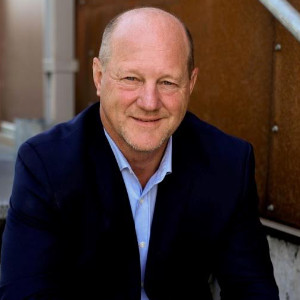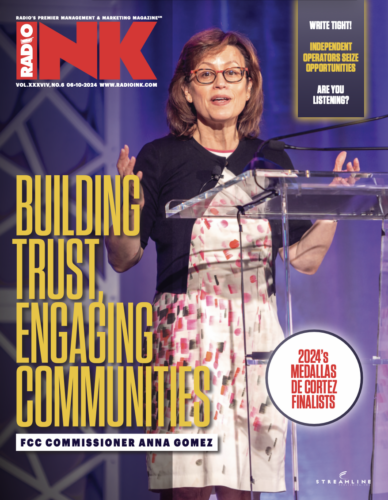
(By Rick Fink) In my last two columns, we explored why “no” is a necessary step towards “yes” in your selling process, and we discussed the first five of our ten things to do after “no.” Let’s explore the remainder of those 10 steps.
Step 6: Say thanks in a big way
Thanks for the appointment, thanks for giving me new insights into your business or your goals, and thanks for considering us, etc. Don’t only say thanks verbally, but follow up in writing with a personal note. Also thank any key influencers, coaches, or associates who referred you, and keep them in the loop.
This is often majorly underplayed.
Step 7: Regroup and strategize
After no, carefully plan your next strategy based on what the “no” taught you. Through questioning, you’ve learned why your prospect said no, and conversely, you now know what you have to do to get to yes.
Step 8: The rule of three
Before you ask for the order again, initiate a minimum of three valid business interactions. A valid business interaction is any contact that benefits your prospect. Pushing for a sale on every encounter can be a real turn-off, but delivering a minimum of three messages of value before the next ask will help create a pre-sell before your next approach.
Step 9: After no, get a second opinion
Review the situation with your sales manager, have a productive brainstorming meeting with your creative people, or, SoundADvice members are always welcome to contact me 24/7 to discuss the situation and alternative approaches for the next proposal.
Step 10: Bow out gracefully
Last but not least, when you have exhausted the previous 9 steps, know when to quit – but do it with confidence and style.
Don’t just disappear. Let the prospect know that you are convinced your station can produce results for them. Let them know you would like to have another account executive tackle the challenge, and ask them what they look for in a media account executive so that you can better select the team member at your station to serve them.
There is no shame in another account executive making a sale where you could not. If your account trade results in a win for the station and a win for the client, you are a winner. There will be clients that others couldn’t sell that you could sell, and vice versa.
Remember, if you’re not getting any no’s, you’re not trying hard enough, and if you are getting too many no’s, you aren’t preparing properly.
In conclusion
Remember to take responsibility for “no”, and retrace each step in your process to learn how to get to “yes”.
More often than not, when you question to uncover the real reason for the “no”, it’s very likely you’ll uncover what it takes to get a “yes.”
NEVER Stop Learning – Get Better Every Day!
Rick Fink from ENS Media can be reached at 605-310-2062 or [email protected]. Read Rick’s Radio Ink archives here.






Very useful insights but at the end of the sales cycle hitting a no, means no.
Your value, dignity and definition are a clear path to a polite exit to the door.
If anything a no from one advertiser for whatever reason is your invitation to recalibrate your pitch and take it to that no business to a direct competitor and get a yes.
There’s nothing more powerful than hearing better business from a hard earned yes from an advertiser that from no that you’ve chased to death that most likely would have been a no business maintenance nightmare had the said yes.
Always read the good business vs. better business warning labels.
That no from one business is your first clue that advertiser doesn’t appreciate the hard work and dedication you and your team have invested to make your radio station the best it can be.
Same applies for the no response is a response from an email deck presentation after a meeting.
It’s a matter of dignity and respect.
Next!
Great advice, Rick. I’ve found that clients buy ideas. Even if they say no because they don’t have the budget, if you find the right idea that addresses their problem, then they will find the budget to say yes. Selling is always a process.
This column is certainly very well intentioned. But it is written from a consultant standpoint, with consideration that station owners are part off the reading audience.
First, who is “they” that said “no” ? A major ad agency? Well, after the buy is placed, the client funds are gone. The agency will day they will reconsider you on the next buy. The agency is NOT changing what they’ve already sent the client.
Now, if “they” was a direct client,,,again, the funds have been committed to other stations. Trying to reverse that “no” — first, you’re asking a client to undo a buy they already made, to include you. You’re asking the client to go back, and undo the buy they already made, to cancel someone else they already committed to, to make room for you. Worse, if you offer “value” or lower your rates to reverse the “no”, then the client might be frustrated that you didn’t do that before you lost the buy. Worse, you’ve just lost credibility, and you can never get that back.
Reversing a “no” certainly idealistically is a great idea. But in reality, trying to do that is asking the client to go back on their other buying commitments, and can severely hurt your credibility.
As an agency guy, I absolutely agree. My POV is that the rep/station has either come to me too late, doesn’t understand our business or process, doesn’t understand the clients needs (or wants), etc. All this can be rectified by gaining insights through basic, regular communication that *isn’t* just pitching — it comes from dialogue and asking questions. This fixes the pitch timing issue, builds credibility and increases future consideration.
I appreciate the feedback. However, in B to B sales, unless you burn the bridge you can always go back with another idea. Yes, maybe not for that particular buy, but in most cases, not all, there are more buys to be placed in the future. Dealing with agency’s is a completely different game than delaing directly with buiness owners and managers.
Your points are well taken and I appreciate the feedback. This series of articles, while can be used when dealing with agencies, are more inline when dealing direct with local owners.
Thank you!